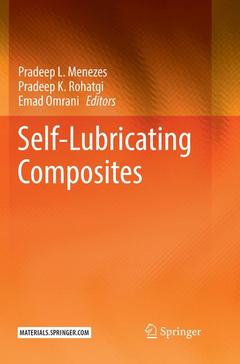Pradeep L. Menezes (corresponding author) is an assistant professor in the Department of Mechanical Engineering at the University of Nevada, Reno, Nevada. Before joining this university, he worked as an adjunct assistant professor at the University of Wisconsin–Milwaukee (UWM), Wisconsin and as a research assistant professor at the University of Pittsburgh, Pennsylvania. Dr. Menezes’s productive research career has produced more than 70 peer-reviewed journal publications (citations more than 2000, h-index–24), 25 book chapters, and two books related to tribology. Pradeep K. Rohatgi is a UWM distinguished professor. He has coedited and coauthored 12 books and more than 400 scientific papers and has 19 U.S. patents. He is considered as a world leader in composites and materials policy for the developing world. He has served on committees of governments of United States and India in the areas of materials, especially those related to automotive sector, to promote collaboration. His research includes advanced manufacture of lightweight, energy absorbing, self-lubricating, and self-healing materials and components including micro- and nanocomposites and syntactic foams. He is the founder chief technology officer (CTO) of Intelligent Composites, LLC, Milwaukee, Wisconsin. Emad Omrani is a graduate student of Dr. Rohatgi at the UWM. He has coauthored 2 book chapters and 7 peer-reviewed scientific papers. At UWM, Dr. Menezes collaborated with Dr. Rohatgi and Mr. Omrani in the areas of Tribology and self-lubricating materials and published several research papers on the tribology of self-lubricating materials. Dr. Menezes and Dr. Rohatgi are well-known tribologists and self-lubricating materials scientists. These editors are therefore well known and well connected in this field to put forth an excellent book on this topic.

